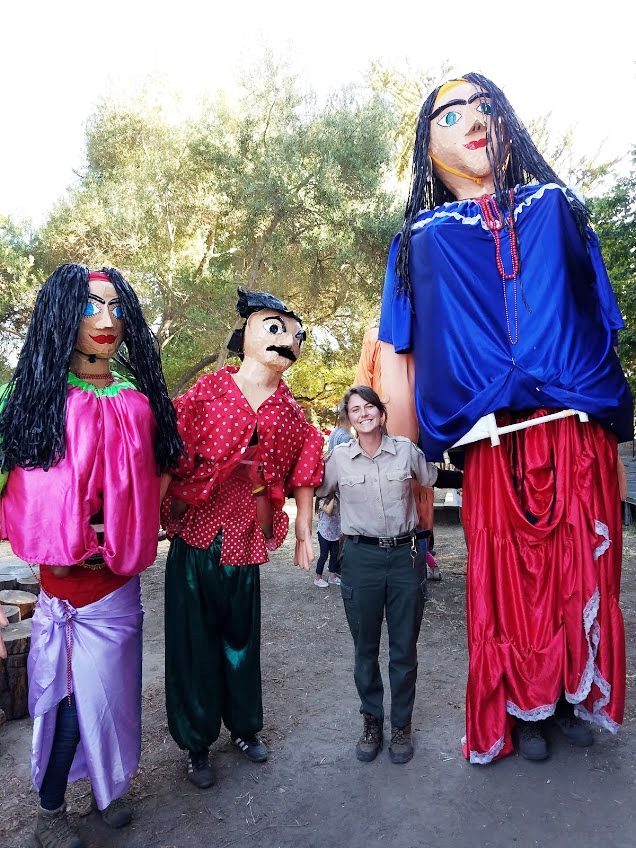Speaking Truth To History
State Parks Interpreter Uses Anthro Perspective
By Isabella Kressman

When I was offered a position within State Parks as a historic interpreter for the Santa Cruz Mission State Historic Park, I did not know what to expect from the position, but it soon became clear that this was a very important job! In 2017 I had taken ANTH189: Anthropology Field Methods, a field course coordinated through Albion Environmental, UCSC, and Friends of Santa Cruz State Parks. It took place at the site of the Castro Adobe, now a State Park, and involved archaeological assessment to protect cultural resources. After the field school I was contacted by a State Parks recruiter for part time positions, and was accepted.
The Santa Cruz Mission State Historic Park is home to the remaining Native housing of the Santa Cruz Mission. It is the last surviving structure of the mission, and the oldest building in the county. We use these remaining 7 rooms to explore what daily life would have been like for the people living within the mission grounds.
My personal perspective of indigeneity was formed through living on the Suquamish reservation in Washington for a few years of elementary school. My father is a tribal member, and when I returned to California in the 3rd grade it was a big change. The following year of elementary school, our class learned about California missions and the familiar narratives of our state’s history. Today, it is my job to educate schoolchildren and the general public about a really tough period in history. I use my UCSC Anthropology education to discuss the importance and significance of sites like the missions.
During my first quarter at UCSC, I took an ethnographic writing class with Associate Professor Mayanthi Fernando where I learned of the concept of “making do,” or bricolage. I try to bring this perspective to the experience that Native people would have had at the Mission. They were “making do” in a changing world. Using an archaeological, historical and cultural perspective, I try to speak truth to the varied experiences that would have occurred within the Mission. It is important to continuously reinterpret these landscapes and give people an opportunity to have the conversations that transform our collective narrative.
I love working with State Parks because people from all backgrounds visit and engage in our shared resources. I also get to meet fellow UCSC students and graduates interested in this site. I have had the opportunity to grow as an individual within an agency that I value. I have coordinated volunteers, helped create events, lead programs, and interpret a historical site for diverse and varied audiences. I even get to work in the garden! Working with State Parks inspired me to pursue a second major in Environmental Studies, which I’ll be finishing this quarter. After graduation I will be working in a permanent position with State Parks in the district offices.
Above, Isabella Kressman, a student and California State Parks interpreter, poses with large puppets called Los Monos de Calenda used in traditional Oaxacan fstivals. Photo Courtesy of Isabella Kressman
